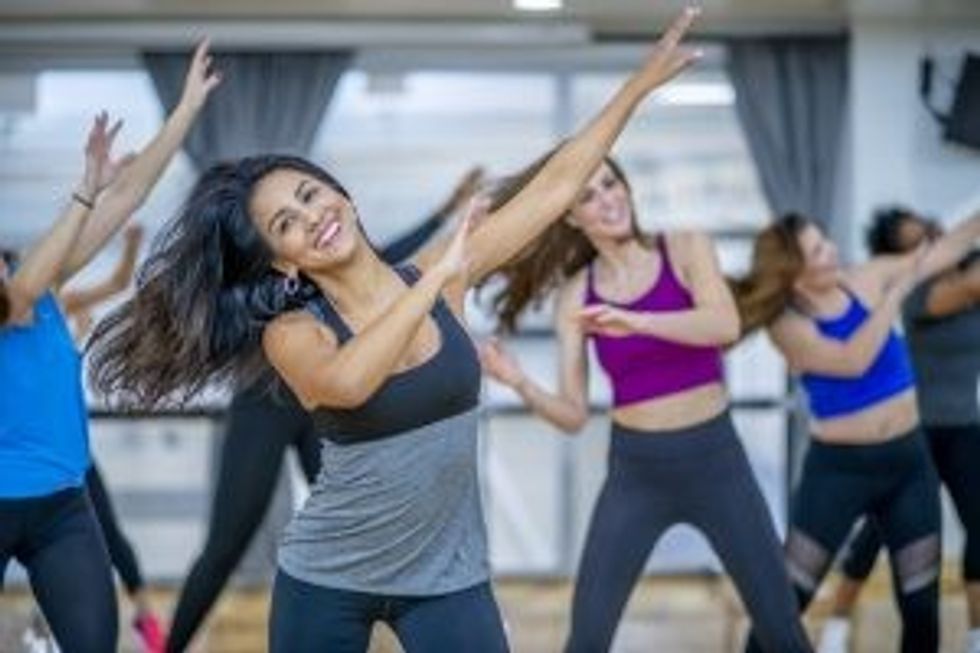Whether it is the artistry, expression, enjoyment, rich history, visual splendour or countless other reasons, there is a lot to love about dance. It also has unlimited adaptability that makes it accessible for everyone to participate, including those with disabilities.
There will be a global celebration of the amazing art form, its diversity and talent this week with International Dance Day on Saturday (29). Dance also having multiple health benefits, from the physical to mental, inspired Eastern Eye to highlight 10 ways it can help wellbeing.
Weight loss: Dancing works all parts of the body, which makes it a hugely beneficial way to
stay fit. Multiple studies have shown that the increased movement with dance can help lose weight, in a similar way to aerobics activities jogging and cycling. That is why multiple gyms
offer diverse forms of dance classes, with varying degrees of intensity and styles that help shed
those pounds.
Flexibility: Constantly performing a range of movements during dance gradually increases
the flexibility of your body and subsequently reduces stiffness, including any joint pain. Simple stretches associated with many dance forms will help to do the same. That flexibility will also help blood circulation, increase speed, and improve posture.
Cognitive performance: Dance is a great form of mental exercise because it challenges the
brain. Research has shown that dancing can help boost brain health, including the ability to
think better as you age. Multiple areas of the brain are used while dancing, which helps areas
of cognitive health like balance, control, planning, movement, focus, mental flexibility, and
memory. Research has shown the brain is positively affected and that is why many, including
those who are ageing, are given dance therapy.
Emotional health: Many studies have illustrated the emotional benefits of dance. Apart from
generating mood-boosting chemicals like endorphins and serotonin, it can also help relieve
stress, depression, tension, and anxiety. Dance can help those feeling isolated by creating a
sense of community. It is also seen as a healthy way of expression and letting go of negative
feelings. Dance can benefit the emotional health of others because it is a great way to form
a close connection. It can also teach you to be vulnerable in a healthy way. Improving emotional wellbeing feeds into other areas like confidence and courage.
Confidence: Whether it is the satisfaction or
learning a dance form, mastering a routine, performing in front of others, or partnering up with someone, dancing is a fun way to boost confidence. That is why it remains a popular social activity, and a proven icebreaker for those who need it. Joining classes is a great way to start because you are surrounded by like-minded people and can progress at your own pace.
Although it is normal to feel nervous when learning, studies have ultimately shown that
dance helps increase selfesteem.
Expression: Dance is one of the greatest forms of selfexpression. Research has shown this can
lead to being more sensitive to others and help interpret their emotions. Being able to express yourself through dance also fuels creativity and can put across your personality.
Co-ordination: Physical co-ordination and balance are important because they enable different parts of the body to be used efficiently. Dance improves both because the whole body is being moved in sync with the brain to use every muscle group, which gets strengthened through dance. It helps the central and peripheral nervous system to remain in good shape. With both deteriorating with age, it has significantly
helped senior citizens.
Energy: The collective influence of weight loss, flexibility increasing and getting fitter means dance has been proven to boost energy levels. This has led to physical and mental performances in everyday life increasing.
Health issues: Multiple studies have shown that dance has helped some with conditions like
obesity, diabetes, arthritis, muscle pain, fibromyalgia, multiple sclerosis, cerebral palsy, Parkinson’s, intellectual disabilities, and Alzheimer’s. It has been particularly good in improving cardiovascular health, which can protect from heart disease and help the immune function.
Fun: Last, but not least, dance is a perfect mood booster and has proven to release happy hormones. Whether you are grooving at home alone in a living room, in a fitness class or busting shapes with friends on a crowded dancefloor, it is a lot of fun and a great way of
letting loose. That is why you should find a reason to dance, including right now.
Top dance class tips
■ If you are older or have a health issue,
get advice from a doctor before starting.
■ Warm up and stretch before a dance
session.
■ Hydrate before, during and afterwards.
■ Don’t be afraid to ask your instructor
for help.
■ Wear the correct shoes for the surface
and loose-fitting clothes.
■ Don’t push yourself too much and gradually build up.
■ Have fun and be brave enough to try.
■ Get inspired by watching other dancers.
■ Take up dancing with a friend and motivate each other.
■ Cool down and stretch after dancing.














